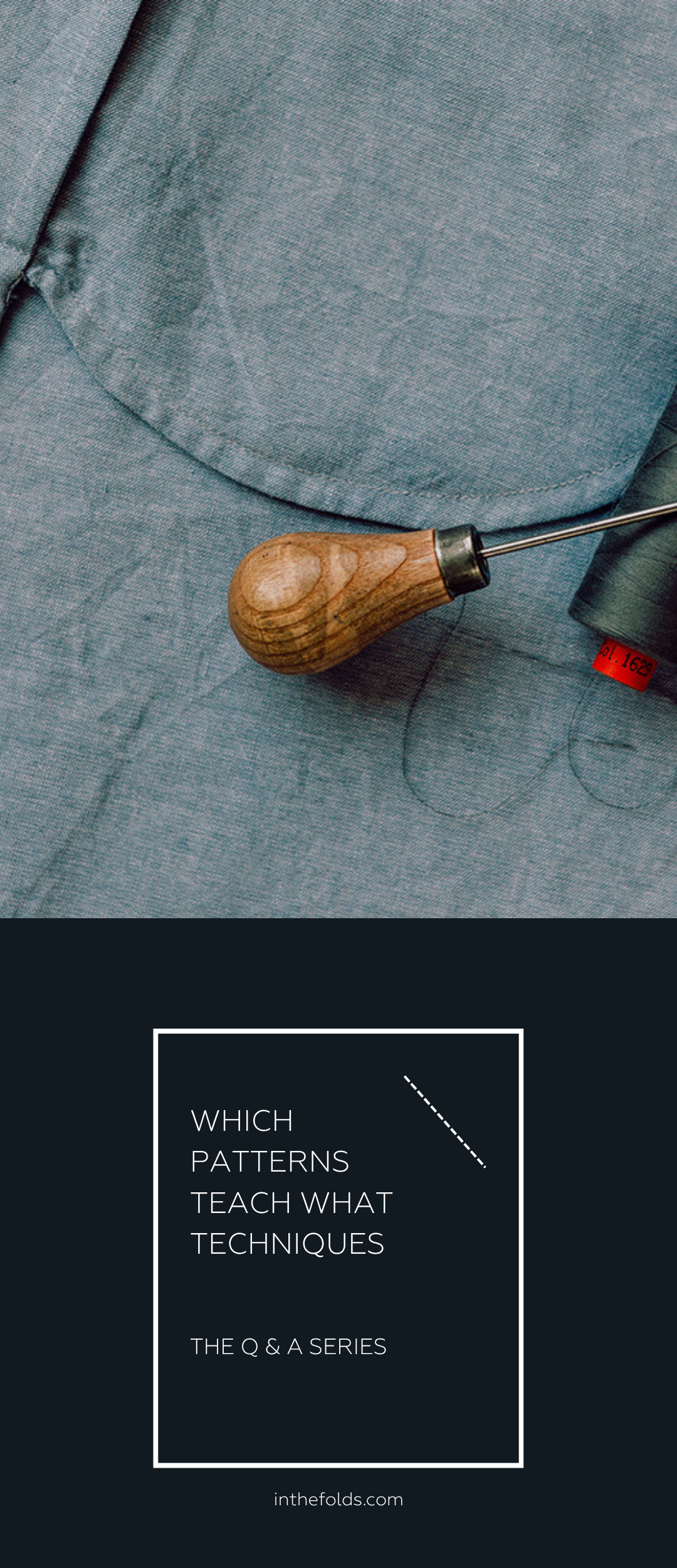THE Q & A SERIES
HOW TO MANAGE A GROWING WARDROBE OF HANDMADE CLOTHES
From all your makes do you ever feel like you have too many clothes? What do you do about storage and do you wear all your makes regularly? Do you ever get rid of your older makes that no longer work for you?
This question came up in our private, online Curated by ITF community this week and it got such great interaction that we thought we’d share everyone’s comments with you today!
For most makers, having a full wardrobe is definitely not an unusual ‘problem’. And we use the word ‘problem’ very carefully because the concept of sewing as a form of self-care is known and very much appreciated in the creative community.
the benefits of sewing : more than just clothing
The benefits we get out of making are so much more than just having clothes to put on. Making gives us the opportunity to take a break from day-to-day life. When the rest of our life happens at break-neck speed, sewing allows us to focus on the task at hand and to be mindful and meditative.
Sewing motivates and challenges us. It gives us the opportunity to continue to learn and solve problems once we’ve finished studying for our profession. It teaches us resilience, because it doesn’t matter how long we’ve been sewing for, there will always be moments when our makes just don’t go to plan.
And one thing we know for sure, because we see it everyday with our Foldies in our Curated by ITF community, sewing provides an opportunity to connect with others who share our love for the craft. And we think this is probably the best part of all!
So with all that in mind, here are some ways our Foldies manage a growing wardrobe of clothes!
Charity shop donations
If you’re getting stressed about your expanding wardrobe, consider gifting any unworn makes to your local charity shop. One of our clever Foldies likes to help the volunteers out by including a little tag that includes the size of the garment and the fabric content.
Gift to family and friends
If you’ve been sewing for a while then it’s likely that you’ve had a friend or family member comment positively on a garment you’ve made. Try to remember if anyone has admired the garment you’re wanting to move on and wrap it up as a little pressie for them.
If you’ve decided you definitely need to slow down or stop making clothes for yourself for a while, but you’re also thinking about your growing fabric collection, consider loved ones you can make gifts for. By making clothes for others, you’re filling your sewing cup, practicing fitting on other people and emptying your fabric stash at the same time! Win, win, win!
Only make garments you need and really, really love
If you have trouble handing over garments you’ve poured your heart and soul into, you’re not alone! In this case, being more selective in the garments you choose to make can help. Try not to be influenced by trends or the latest patterns. Instead, take a look at your wardrobe and think about the garments you always go back to over and over again. Why is this the case? Is it the fabric? The colour? The cut? The style? Where are the gaps in your wardrobe? Our Slow Sewing Planner is a helpful tool to have when working through this process.
@sewingwithkate wearing her original Rennie dress
@sewingwithkate wearing her refashioned Rennie dress
Refashion garments to make them more wearable
Sometimes it’s not until after we’ve made something and tried it on or worn it a few times that we realise it just doesn’t suit us. In these situations it can be helpful to consider whether there’s any little changes you can make to a garment to improve it.
Take it in if it’s too baggy. Turn a dress into a skirt and top. Take up the hem or let the hem out.
The pattern instructions may say you’re finished, but your imagination doesn’t have to! Take the opportunity to try something you may not have thought of before.
Reuse the fabric in another garment
Depending on the garment size, take the time to cut off all the seams so that you have as much usable fabric as possible. Return what fabric you have left to your fabric stash to be used in another make in its entirety or for pocket bags, facings, or making bias bind.
One-in-one-out
If you’re making a new garment, commit to donating the least favourite alternative already in your wardrobe. If you decide you love everything in your wardrobe, adopting this approach may help curb the impulse to make something new!
It’s important to find balance with everything we do, including the garments we sew and the hobbies we have, so we hope this post helps you if you’ve been struggling with an expanding wardrobe full of beautiful me-mades!
Happy sewing,
Emily
RESOURCES MENTIONED IN THIS ISSUE
Curated by ITF is our sewing subscription and private, online community. Join now to get a new project each month to stop pattern-stashing and start skill-building!
Our Slow Sewing Planner helps you gain clarity on what’s missing from your wardrobe, as well as sustainable tips for organising what you already have.
Our Rennie dress pattern is a boxy, relaxed fitting calf-length dress made for easy dressing that incorporates a range of finishing techniques for a beautifully finished garment. This pattern will elevate your wardrobe and sewing skills!
For more issues of the Q & A series, you can check out the archive here.
WHAT YOU’VE BEEN MAKING
Peppermint Wrap top made by @phantosmia_
Barkly skirt made by @mamasuesews









